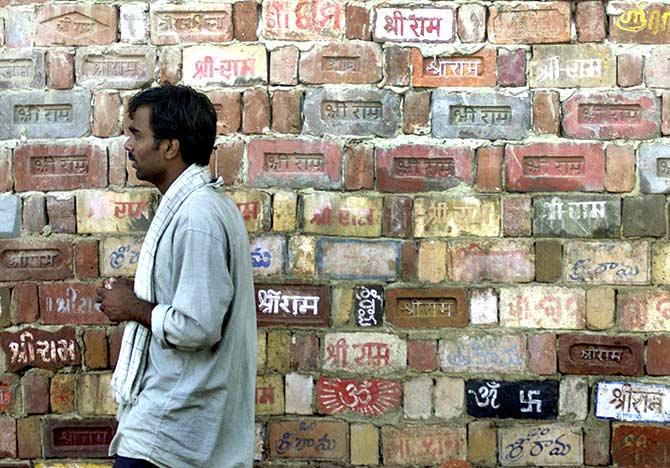
Hindu parties asserted in the Supreme Court on Thursday that claims of the Muslim side over the 2.77 acre land in the Ram Janambhoomi-Babri Masjid title dispute were belied by the excavated material which suggested existence of a 'massive structure' beneath the demolished mosque.
The counsel for deity Ram Lalla said the excavated materials are a 'proof beyond doubt' about the existence of the structure beneath the demolished mosque in Ayodhya while rebutting the claim of Muslim parties about the existence of an Islamic structure.
The counsel stated that from the pillar bases, artefacts, circular shrine, intersecting brickbat walls found in excavation, an inference can be drawn that the massive structure was a temple and not any Islamic structure.
A five-judge Constitution bench headed by Chief Justice Ranjan Gogoi was told by senior advocate C S Vaidyanathan, appearing for deity Ram Lalla, that contention of the Muslim parties about a structure beneath the disputed site being an 'idgah' wall or an Islamic structure was not correct.
"First their case was that there was no structure at all. Secondly, they said it was an Islamic structure or an idgah wall. We say that it was a temple which was demolished and the pillar bases found during excavation also suggest to this effect," Vaidyanathan said in his rejoinder arguments.
"That there was a massive structure beneath is a proof beyond doubt," he said.
Senior advocate Rajeev Dhavan, appearing for Muslim parties, said that as per the Archaeological Survey of India (ASI) report there is no conclusive proof or findings of destruction of a temple.
"There is no finding in the ASI report that there was a destruction of a structure. There is no proof of destruction at all in the ASI report," he said.
Vaidyanathan told the bench, also comprising Justices S A Bobde, D Y Chandrachud, Ashok Bhushan and S Abdul Nazeer, that it is the case of Hindu parties that inference can be drawn from the excavated materials which include circular shrines, pillar bases, artefacts, intersecting brick bat walls and others that it was a temple.
"The walls found in the excavation are not ordinary walls. There is an indication of massive structure which was a public place. It was not a private residence.
"In the conclusion ASI has drawn, they have suggested existence of a massive structure and taking all this into account, it seems to be a nature of a temple," he said, adding that it was a place of significance for Hindus, who worshipped there for centuries.
At the outset, Vaidyanathan said that intersecting walls have inscriptions of some Shlokas and Makar Paranala which is considered as vehicle of Goddess Ganga.
"These are some features in the walls of a traditional Hindu temple built between 10 and 11th century," he said, adding that even the pillar bases found during excavation show that the claims of Muslim parties that it was an Islamic structure was only a conjecture.
He said the reasonable inference drawn is that it is the faith and belief that there was a Hindu temple.
Interrupting Vaidyanathan, the bench said that faith and belief about the Hindus cannot be disputed but now in evidence, what is there to establish the existence of temple.
The 36th day of hearing also saw the top court restraining the Hindu parties from placing or relying on any new materials saying it won't allow at this stage to place any new evidences.
"Just because a five-judge Constitution bench is sitting you cannot bring any new materials at this stage. The constitution bench is hearing this case because of the importance and sensitivity of the matter," the bench told senior advocate P N Mishra, appearing for one of the Hindu parties, who tried to place some scriptures on record to suggest that Hindus used to worship the place as Lord Ram Janmsthan.
The bench restrained Mishra from placing any materials and curtailed his arguments.
Dhavan periodically raised objections when advocates for the Hindu parties tried to bring out some new facts and materials to counter the arguments of the opposing sides.
Vaidyanathan stated that inscriptions found in the wall are similar to the one found in third century Sarnath temple at Varanasi.
Dhavan said that their contention was that testimonies of the witnesses cannot establish that there was continuous worship at the disputed prior to 1934.
Senior advocate P S Narasimha, appearing for one of the Hindu parties, said there are seven documents which proves our right to worship at the Janmsthan (birthplace).
"Faith and belief should be proved on doctrine of religion. We rely on Skandapurana, which is of eighth century period, prior to the construction of mosque.
"Shlokas says that Hindus should visit and worship at Janmsthan to attain Moksha (liberation from the cycle of life and death) and purge all sins," he said, adding that within the tenets of Hinduism, the birthplace of Lord Ram holds special importance.
He said that existence of mosque at the disputed site, continuously and even today, is not a stand alone structure and is always referred to as a place where the Hindus worshipped.
Senior advocate Sushil Jain, appearing for Nirmohi Akhara also countered the arguments of Muslim parties on the rights of 'Shebait' and said that temple included both inner and outer courtyard and Akhara does not treat both areas as separate.
He said that Akhara was found to be in possession of the outer courtyard which has 'Ram Chabutra', Sita Rasoi and others, when the suit was filed for the inner courtyard.
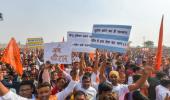
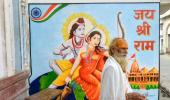
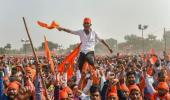
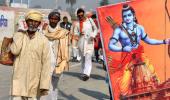




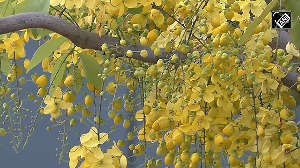

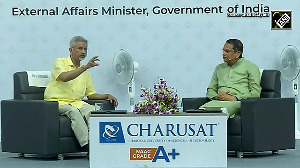
 © 2025
© 2025